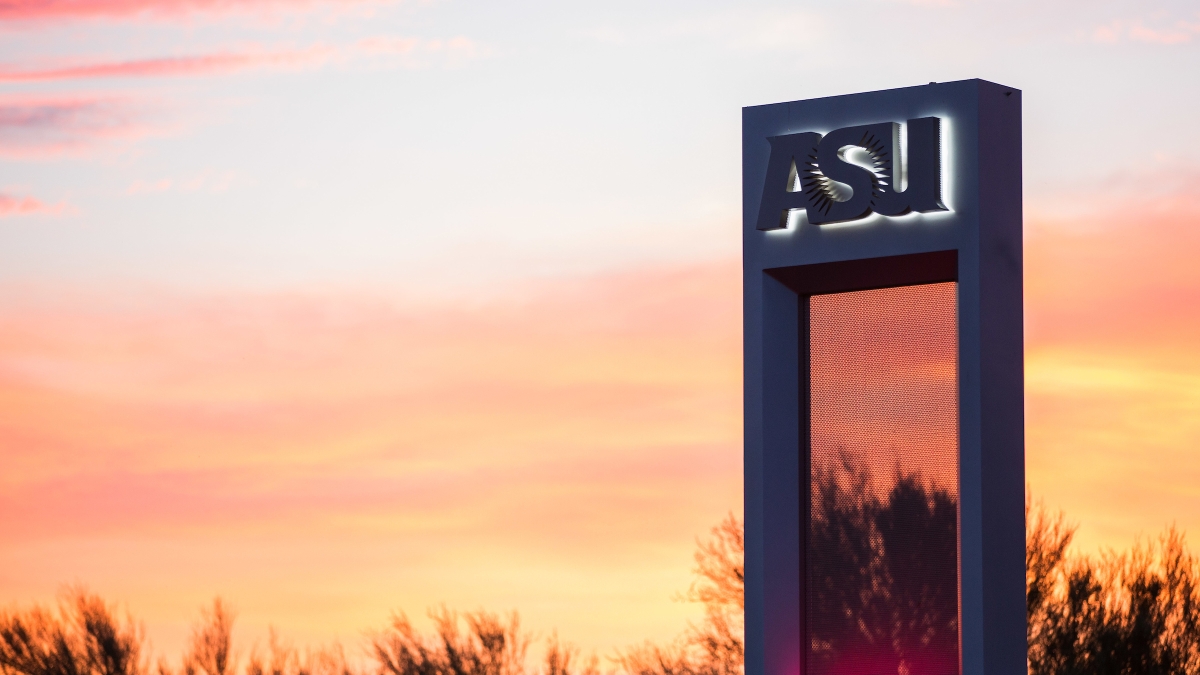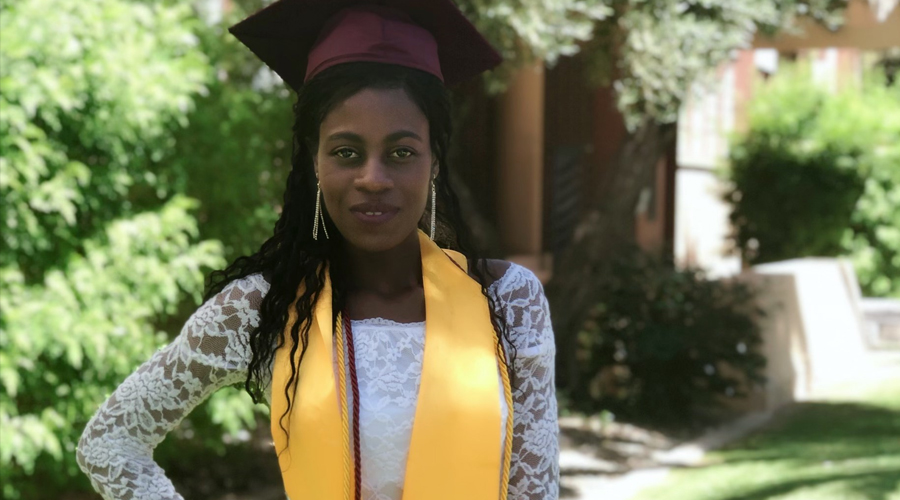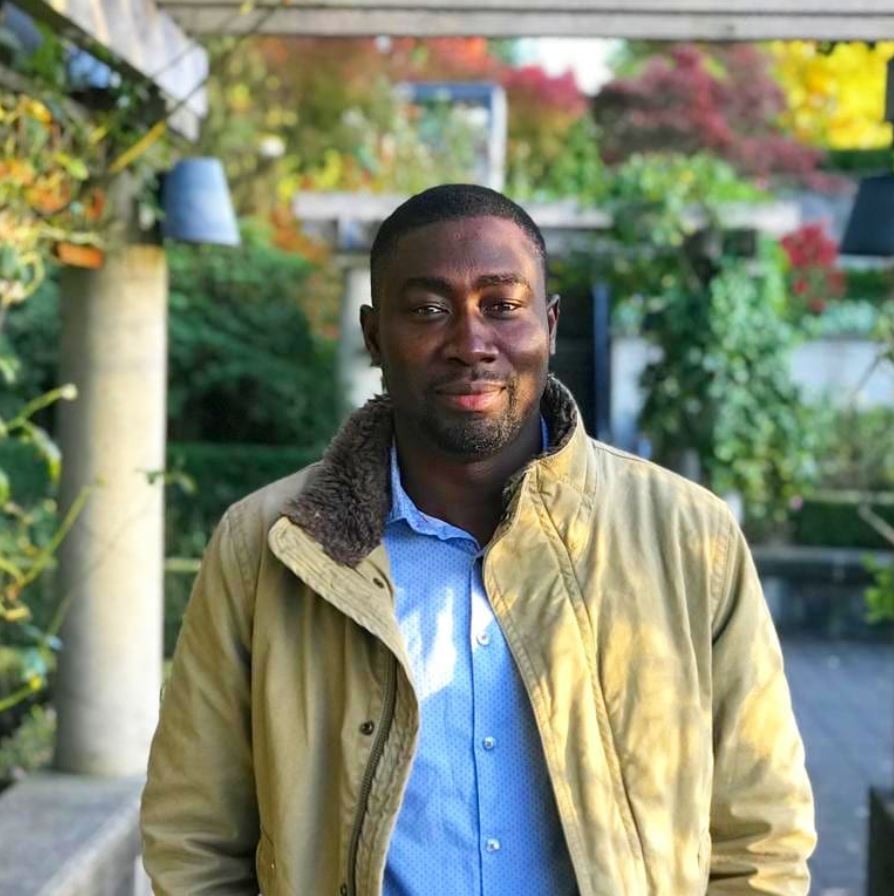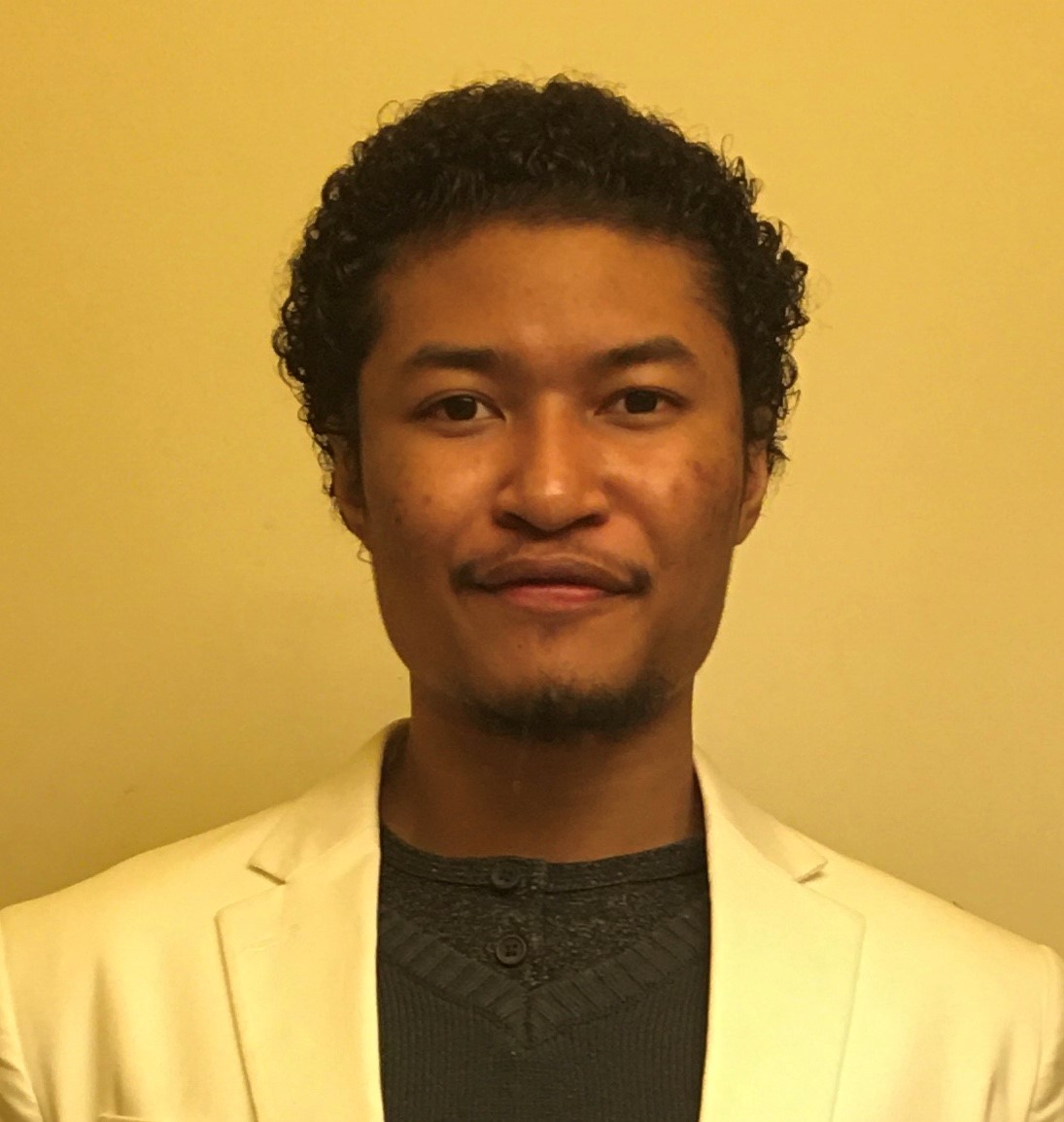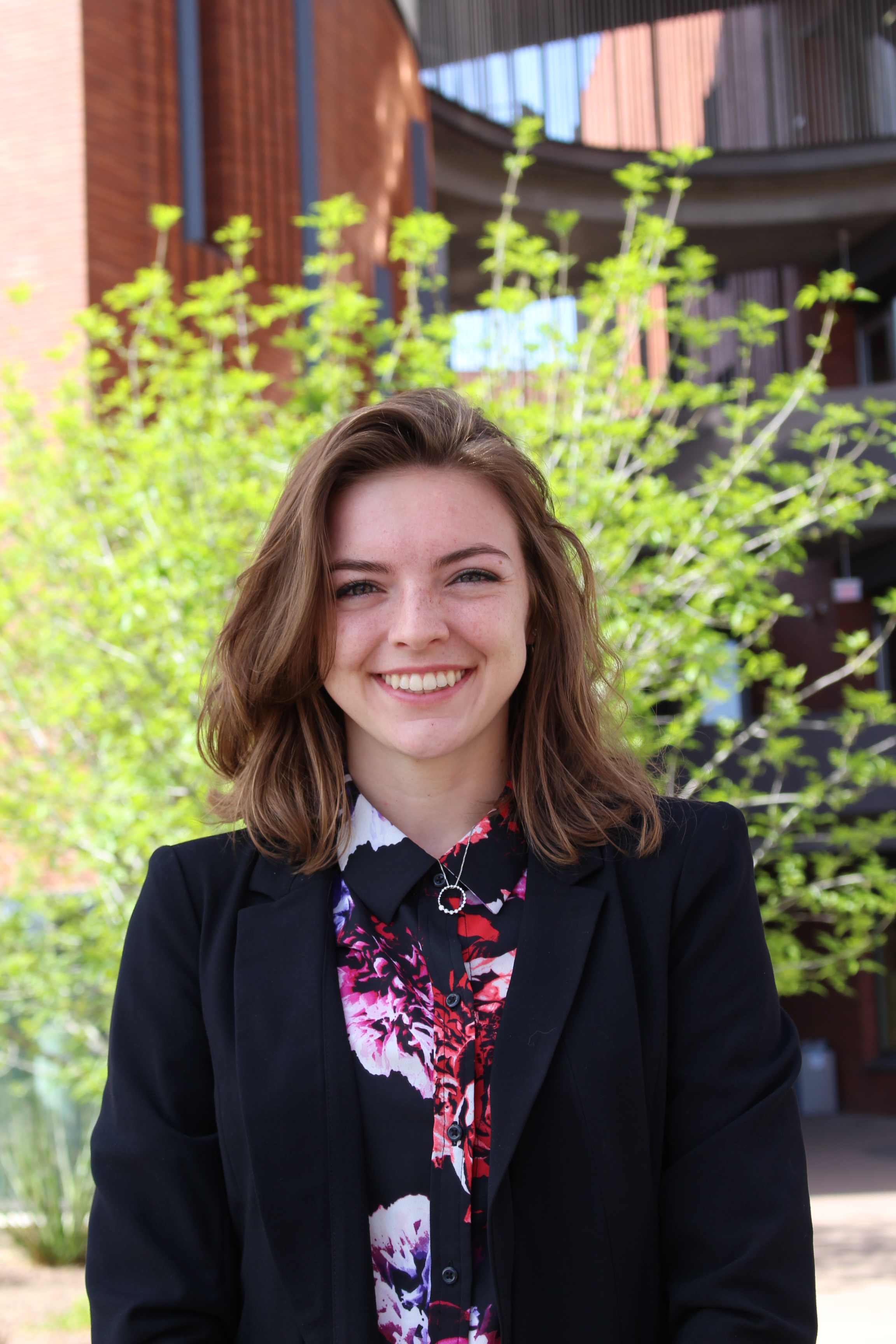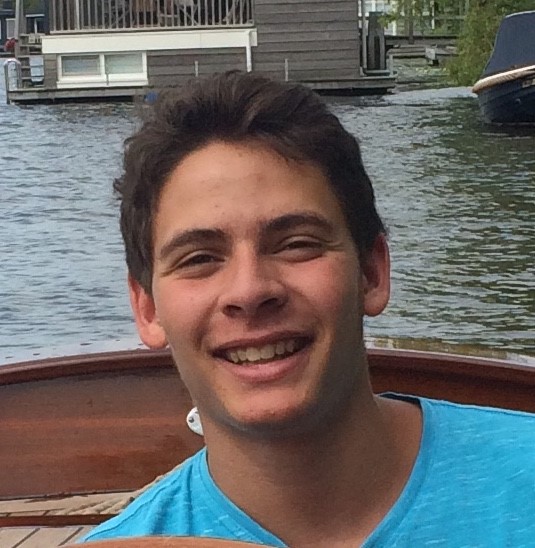Arizona State University is continuing to produce winners of the most prestigious scholarships, with five more young people being honored for their accomplishments in research.
Two recent graduates were announced Wednesday as Gates Cambridge scholars, winning full scholarships to study at Cambridge University in England. They are Ntombizodwa Makuyana of Zimbabwe, who earned a degree in 2019 in medicinal biochemistry, and Balanding Manneh of Gambia, a 2018 grad whose degree is in biological sciences. Both were Mastercard Foundation Scholars while at ASU.
In addition, three third-year undergraduates have been named Goldwater Scholars, which is the most prestigious undergraduate award in the nation for students in science, math and engineering fields who aspire to research careers. They are Delondrae Carter, Alexis Hocken and Tal Sneh. All three are in Barrett, The Honors College.
Makuyana and Manneh are the fifth and sixth Gates Cambridge scholars in the past six years from ASU, and this is the first time two Sun Devils have been selected at the same time.
The Gates Cambridge Scholarship was established in 2000 by a donation of $210 million from the Bill and Melinda Gates Foundation to the University of Cambridge. The scholarship, which has a 1% acceptance rate, includes 77 people from 30 countries in the class of 2020.
Both ASU graduates put an enormous amount of time and effort into their work, according to Kyle Mox, director of the Lorraine W. Frank Office of National Scholarship Advisement at ASU and associate dean of Barrett, The Honors College.
“We have been working with both of them over several years in preparation for various prestigious fellowships,” he said. "Not only are they intellectually gifted, highly motivated and deeply altruistic — they also work harder than almost anybody else.”
There are many similarities between the missions and priorities of the Gates Cambridge Scholars program and ASU, Mox said.
“Both promote academic excellence, of course, but both the Gates Cambridge Scholars program and ASU push our students to demonstrate a commitment to improving the lives of others, as well as demonstrating a strong capacity for leadership,” he said.
The Goldwater Scholarship was established in 1986 and named for Sen. Barry Goldwater, an Arizona native.
“These students work incredibly hard to keep themselves at the heads of their classes and to show leadership in the research lab,” Mox said.
“All of them are highly motivated and committed to producing research that will one day benefit our entire society.”
Here is more on the winners:
Gates Cambridge Scholars
Ntombizodwa Makuyana
Question: Why did you decide to study at ASU?
Answer: ASU is committed to not only helping students succeed academically but also to creating a better life. I have personally experienced the generosity and kindness of my academic advisers, professors and staff during my stay at ASU. My academic advisers would go beyond the task of helping me select courses to understanding my strengths and weaknesses.
ASU also offers a diverse range of opportunities, research and even a diverse set of campus environments to accommodate everyone. Its inclusive nature has always made me feel welcomed, from interacting with students from all walks of life in student organizations to classrooms. Another reason for choosing ASU is its international reputation for innovation. I must say, the innovation culture is pretty contagious! Not only did I became an innovator, but also an entrepreneur working on providing quality education and empowering economically disadvantaged girls in my home country.
Q: How did your time at ASU inspire you?
A: When I first came to ASU, I was set on getting a degree and continue living on. However, ASU showed me there is more than just that. I could also contribute to the betterment of the world.
My undergraduate studies and research experiences sparked an interest in being a biomedical scientist by providing the foundation for further scientific research. In particular, I worked with Dr. Nancy Gonzales at the REACH Institute, where I studied the effect of environmental stress on attitude and identity development among Mexican adolescents. The research showed the potential of science in transforming lives and propelled me to also explore the applications of biochemistry techniques. In biochemistry courses, I studied the applications of green fluorescent protein in science, which further prompted me to research proteomic strategies and its applications in cervical cancer research with Dr. Karen Anderson in her lab at the Biodesign Institute. In the Anderson Lab, I worked on elucidating the potential use of human papillomavirus-specific immune responses as biomarkers for early detection of cervical cancer. The ultimate goal of my project was to absolve women of the misery of having limited effective screening programs and medical care services by developing cheap, point-of-care testing devices. The research project was not only intellectually stimulating, but it aligned with my personal goals of improving women's lives in Africa, since the point-of-care tests can potentially reduce cervical cancer-related deaths in Africa alone by 42.9%.
All these research experiences at ASU helped me to treasure the importance of good health every day and made me realize how much I aspire to be involved in the improvement of other people's health as a biomedical scientist with an emphasis on human immunity and diseases.
Q: What have you been doing since graduating from ASU?
A: I have been working as an instructional science assistant at Mesa Arts Academy (Boys and Girls Clubs of the East Valley), helping to teach students by demonstrating the breadth of science in ways that middle school students can understand. I was specifically responsible for preparing laboratory materials with respect to the science subject matter, exposing them to diverse careers in science and also sharing my experiences in college of having a STEM degree. I took this opportunity because I am a firm believer in sharing knowledge and giving back to the communities, something I learned while I was a Mastercard Scholar at ASU. I wanted to help students gain exposure to science by providing resources I initially did not have while growing up in Zimbabwe.
I also worked part time as an external collaborator (visiting scholar) in Dr. Karen Anderson’s lab at Biodesign Institute. Her lab has always felt like a second home. I worked on human papillomavirus diagnostics through which l contributed to understanding the manipulation of the immune system in controlling and detecting cancer.
Q: What will you study at Cambridge?
A: I will be pursuing a PhD in biological science. Specifically, I will be studying how immune processes can be harnessed to prevent, control or detect diseases. Understanding the immune processes is imperative as they are the core to curing any diseases or development of drug therapies. At Cambridge, I intend to equip myself with indispensable research skills that could help in finding ways to cure incurable diseases such as Alzheimer’s (degeneration of brain cells) and also contribute to deciphering the mysteries behind the immune system.
I am beyond thrilled to study at Cambridge. As a girl who grew up in a male-dominated society in Zimbabwe, this opportunity will inspire other young women to pursue STEM-related careers since there is less representation in STEM fields in Africa.
Q: What are your career goals?
A: My career goals are set on improving others’ health through research. With the advent of novel viruses and diseases, there is a need for scientists to provide both strong qualitative analysis and quantitative data to help with implementing research discoveries into clinical settings and better health policies or treatment guidelines. Thus, I hope to be one of those scientists. It is my intent that I help give everyone a fair chance at fighting diseases and accessing preventive and curative medical services.
Balanding Manneh
Question: Why did you decide to study at ASU?
Answer: ASU is great institution and coming here is one of the best things that has happened to me. Deciding to come to ASU wasn’t difficult, because ASU chose me and not the other way around. I was admitted and received the Mastercard Foundation Scholarship. So a generous scholarship at a world-class university was an irresistible offer that made me get on a plane and fly all the way from The Gambia in West Africa to Tempe, Arizona.
Q: How did your time at ASU inspire you?
A: I majored in biological sciences — genetics, cell and developmental biology — while at ASU and carried out undergraduate research in the Cease Lab, studying locusts. Being part of the School of Life Sciences Undergraduate Research (SOLUR) program allowed me to not only conduct research under the supervision of an ASU faculty member, but also learn about other aspects of research, such as how to communicate findings to the public, among other things. From the courses to my research involvement, these experiences provided me with a strong foundation and equally inspired me to pursue graduate studies.
Q: What have you been doing since graduating from ASU?
A: I am currently a graduate student at the University of British Columbia in Canada where I am studying public health, so I have been in school since graduating from ASU in 2018. I will be graduating next month and am currently doing the practicum component of my degree program at the BC Centre for Disease Control in Vancouver.
Q: What will you study at Cambridge?
A: I will be doing a PhD in medical science and my research will focus on understanding why some people are naturally protected against malaria. Specifically, I will be investigating the molecular mechanisms by which rare variants of the human glycophorin protein — a transmembrane protein in human red blood cells — provide protection against malaria using molecular, biochemical and microscopy approaches. The glycophorin protein is used as a receptor by malaria parasites (P. falciparum species) to enable them to invade human red blood cells, but there are some people that carry mutated versions, or rare variants, of the protein, and the malaria parasites are not able to invade the red blood cells of these individuals, giving these people protection against malaria. I will be studying the molecular mechanisms of this protection. Understanding these natural protective mechanisms can help us develop new therapies to protect people against malaria — a leading cause of child mortality in sub-Saharan Africa.
Q: What are your career goals?
A: My career goal is to become a research scientist or a professor and conduct research on infectious diseases such as malaria and others. Infectious diseases have continued to threaten human health; the COVID-19 pandemic is a good example. Investing in research and having people studying these diseases is our best bet as a society. In short, my goal is to be a part of the people that will be working on developing therapies for these diseases in the not-distant future.
Goldwater Scholars
Delondrae Carter, an astrophysics major who graduated from Archbishop Curley High School in Baltimore
Question: Can you describe your research?
Answer: Brown dwarves are objects that occupy the fine medium between the definitions of stars and planets. They are 15 to 75 times more massive than Jupiter, and akin to Jupiter, are essentially big balls of gaseous material. But relative to the gas giants in our solar system, brown dwarves are hot, and unlike stars, they aren’t massive enough to undergo nuclear fusion in their cores. Because they don’t produce energy through nuclear fusion, they’re fainter than stars and cool over time — properties relevant to my summer research project at the Space Telescope Science Institute.
The goal of my project was twofold: one, to study the Milky Way’s formation history, and two, dark matter composition by locating brown dwarves in the Milky Way’s disk. Because brown dwarves cool over time, their temperatures provide information about their ages: The cooler a brown dwarf, the more time that must’ve passed for it to cool to that temperature. Hypothetically, galactic regions containing cooler brown dwarves should be older than regions containing hotter ones. Furthermore, locating these faint objects and obtaining an estimate of their distribution in the Milky Way’s disk will account for some (though not all) of the Milky Way’s dark matter.
Q: Why did you choose ASU?
A: ASU is one of the few universities that offers an astrophysics major. Many of the universities I looked at during high school only offered a physics major, and then offered an astrophysics specialization in graduate school, but I wanted to get right into the good stuff.
Q: What’s ahead for you?
A: I was initially planning to fly back to Maryland this summer, since I was one of 15 students selected out of about 500 students to participate in the Space Telescope Science Institute’s 2020 Space Astronomy Summer Program. However, the program was canceled due to the coronavirus pandemic, so I’ll be here in Arizona working on Dr. Rogier Windhorst's SKYSURF Project, intended to determine the origins of the light received by Hubble.
Long term, I plan to pursue a PhD in theoretical astrophysics. I hope to someday work in a national lab and be a science communicator with my own show, like Neil deGrasse Tyson.
Alexis Hocken, a chemical engineering major with a biochemistry minor who graduated from Desert Mountain High School in Scottsdale, Arizona
Question: Can you describe your research?
Answer: I am an undergraduate researcher in Dr. Matthew Green’s lab, where I research photocurable nanocomposites, which are composed of polymer and silica nanoparticles. These composites present a promising solution for creating customizable artificial cartilage replacements. By varying the concentration of the nanoparticles within the composite, we can alter the physical properties of the material, such as mechanical strength and flexibility. It is critical to have an acute understanding of the various properties, as it will allow us to better predict the behavior of the material once implemented as a cartilage replacement. I work to analyze various types of nanoparticles that we can incorporate into the material to continue to increase the resolution and range of properties that we can choose from. Ultimately, we hope to be able to 3D-print a tailor-made cartilage replacement for an individual patient.
Q: Why did you choose ASU?
A: I come from a whole family of Sun Devils, which made ASU a very clear choice for me. Throughout high school, I watched both of my older siblings find success within their respective programs, which is what made ASU so attractive to me.
Q: What’s ahead for you?
A: I will be interning at Hughes Research Laboratories in Malibu, California, this summer, where I will be conducting research in the polymer chemistry department. After graduating, I hope to pursue a PhD in chemical engineering with a focus in tissue engineering and/or drug delivery.
Tal Sneh, a biochemistry and physics major who graduated from Fairview High School in Boulder, Colorado
Question: Can you describe your research?
Answer: My main research, under Dr. Rizal Hariadi, focuses on applications of DNA origami to diagnostics. DNA origami is a clever type of self-assembled nanotechnology that uses base pairing to fold a long “scaffold strand” of DNA into very precise structures using smaller “staples” at predefined locations. There are a number of powerful uses for nanotechnology this cheap and reliable, one of them being digital diagnostics. My research captures targets of interest on these DNA origami platforms and amplifies them so that the signal can be read on fluorescence microscopes that cost only a few hundred dollars and, hopefully, can automate data acquisition. This project hopes to provide an extremely cheap but powerful tool in the diagnostic arsenal of resource-poor settings.
Q: Why did you choose ASU?
A: I chose ASU because I knew it would give me the support I needed to achieve whatever goals I had in mind — financially, in research opportunities and in mentorship. The research and faculty here are world-class and are invested in your success, as well.
Q: What’s ahead for you?
A: This summer, I’ll be headed to MIT to participate in the Materials Research Lab REU. After that, I hope to pursue my PhD and make significant contributions down the line to the materials field.
More Sun Devil community

Dean’s Medalist finds freedom — and a second chance — in literature
When Phoenix resident Wade Sharp was last sent to what he termed “the hole” — solitary confinement in a county jail — he wasn’t sure how long he would be there.“COVID-19 was just starting out,” he…
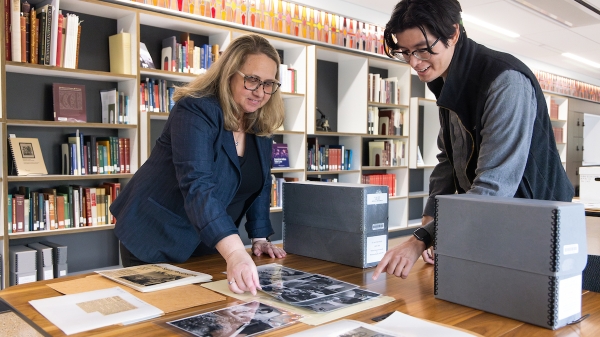
University Archives chronicles more than 140 years of Sun Devil history
Editor’s note: This is part of a monthly series spotlighting ASU Library’s special collections throughout 2024.What was the name of the butcher who bequeathed the first piece of land that…

3 outstanding ASU alumni named The College Leaders of 2024
Three outstanding Arizona State University alumni from The College of Liberal Arts and Sciences will be named as this year’s slate of The College Leaders. The honor recognizes alumni for their…
